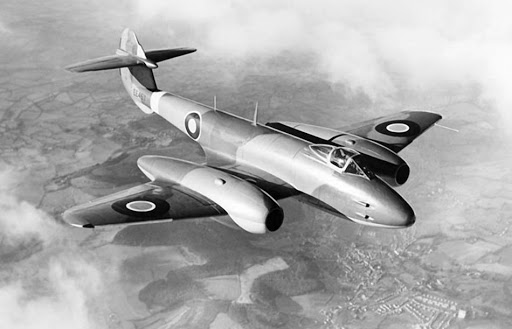The Gloster Meteor is the only Allied turbojet aircraft to have participated in World War II. The first prototypes called Pioneer were developed by the British company Gloster in 1941. A prototype Meteor Mk.I took to the air on May 15, 1941. The aircraft was equipped with two Rolls-Royce turbojet engines – a forced step, because at that time the jet engines had little thrust.
The first serial modification was Meteor F.I, its production was established in January 1944. Initially, these “Meteors” were used to combat the German projectile V-1 (“V-1”). In six months, they shot down a dozen V-1s.
In January 1945, a more progressive modification of the Meteor F.Mk III was introduced. Since the beginning of spring, Meteoram has been allowed to fly deep into Germany for “free hunting”. A total of 210 “Meteors” of various modifications were built by the end of the war. These fighters did not show any special success, but the model range was developed until 1955, and they were in service until the early 1980s.
It is noteworthy that after the war the Soviet Union bought several turbojet engines Rolls-Royce Derwent (which were equipped with “Meteors”) and Nene for reverse engineering.
Technical characteristics of the aircraft Meteor F. Mk.III
Weight, kg: 4771
Take-off weight, kg: 6559
Maximum speed, km / h: 837 (at an altitude of 3050 m)
Practical range, km: 2160
Practical ceiling, m: 13400